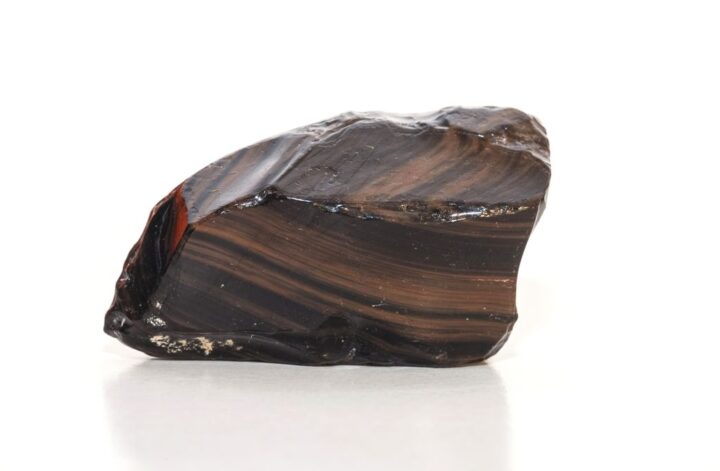Throughout human history, obsidian has been held in high esteem, prized for its strength, courage, and ability to provide protection from fear, harm, and danger. Indeed, obsidian’s allure, symbolism, and practical uses continue to enthrall many, even to this day. In antiquity, obsidian was highly valued for its sharp edges, which made it ideal for creating tools, such as arrowheads, blades, and cutting edges. In Mexico, obsidian mirrors were believed to possess divination abilities, providing a view into the invisible realms.
Obsidian, also known as obsidian stone, is often associated with the elements of earth, fire, water, and air due to its volcanic composition and formation from molten lava. Its name, derived from the Latin word “obsidinus,” translates to “of darkness”. Many ancient cultures regarded obsidian as a symbol of power and resilience, utilizing the stone in various spiritual practices and rituals.
Today, obsidian is employed to construct jewelry, sculptures, and ornamental items for modern residences. In addition to its practical uses, obsidian has been regarded as a valuable asset for spiritual development and a source of direction on life’s path, as well as a tool for dispelling negative energies.
Formation and Properties of Obsidian
Obsidian is an intrusive igneous rock. It forms when molten rock material cools quickly, not allowing atoms to arrange into a crystalline structure. This naturally occurring natural volcanic glass, also known as natural glass, is typically jet-black, with inclusions of hematite (iron oxide) leading to red and brown varieties, and the presence of minute gas bubbles may result in a golden shimmer. Its conchoidal fracture pattern is responsible for its incredibly sharp edges.
Obsidian is a mineral that can be found in many places, worldwide. Countries that have sizable deposits of this substance include:
- U.S.
- Canada
- Mexico
- Guatemala
- Argentina
- Chile
- Greece
- Hungary
- Italy
- Iceland
- Russia
- New Zealand
- Japan
- Kenya
Obsidian’s captivating colors, such as the beguiling gold sheen obsidian or the entrancing rainbow, are thought to have specific meanings. For instance, golden sheen is believed to reveal one’s innate abilities, while rainbow is linked to mending emotional scars. In Medieval Europe, obsidian was believed to possess supernatural powers and the capacity to repel evil spirits. It was also highly valued as a sign of prestige and employed in various types of jewelry. The presence of obsidian in these times generated an atmosphere of mysticism and intrigue, highlighting its deep connection to the spiritual realms.
